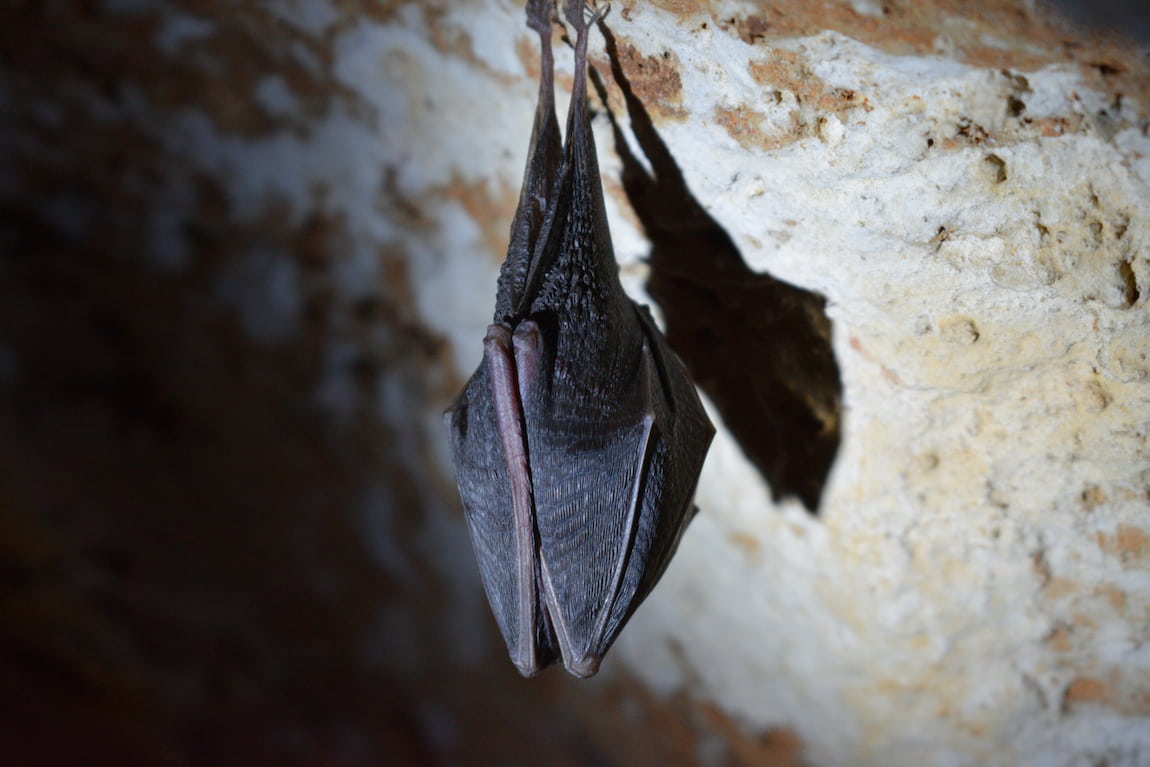The bat is an interesting animal. It’s not just a mammal; it’s the only mammal that can fly. To top things off, bats also make use of echolocation to hunt their prey, but the interesting facts don’t end there. Bats don’t sleep in coffins and lure human victims as Hollywood often portrays, but they do hang upside down most of the time and sleep in caves.
Bats are nocturnal animals that often sleep during the day, which means that they’re awake at night, just like in the movies. But how long do they sleep for? How long is a bat’s sleep cycle, and why do bats need to sleep so much? Find out the answers to these questions in this article!
How Long Do Bats Sleep?
The amount of sleep a bat gets per day varies slightly from one species of bat to another, but they all generally resemble one another. The typical brown bat sleeps for up to 20 hours each day, but usually no less than 18 hours in a 24-hour period.
Bats are truly creatures of habit, as they stick to the same sleep pattern each day and base their sleep patterns on the availability of darkness. Bats don’t like sunlight, but this doesn’t mean that they actually sleep the entire day. They may remain in and around their roosting sites, but will often awaken as the sun begins to go down, and come out to feed only after it’s dark outside.
When Do Bats Sleep?
As you can probably guess, bats are nocturnal mammals, which means that they’re most active at nighttime, and sleep for the majority of the day either inside a cave or roosting high up in trees. Where bats sleep varies depending on their species and location, but we’ll cover that in a little bit.
The bats love for darkness isn’t just a personality trait, despite what you see on television. If you’ve ever seen a bat flying through the air, you know that they’re not the most agile or graceful pilots of the night sky. They actually need the darkness to protect them from predators such as owls and other large birds of prey that can often easily swoop in for an easy bat meal. Sleeping during the daytime gives bats protection at night from these predators.
Bats also use cover of darkness for food. They usually don’t have the best vision, but they use other natural mechanisms to locate their prey, which are usually insects that come out at night. This means that food availability is highest at night, making the best time for bats to sleep during the day.
Where Do Bats Sleep?
If you’ve ever seen the popular hero movie…Batman, you probably have an idea of where bats sleep. They often sleep in caves, high up in trees, in abandoned buildings, hollowed trees, or anywhere they can hang upside down in large numbers of anywhere from a hundreds to thousands. If you want to learn more about this why not check out our article on Where Do Bats Sleep
Do Bats Always Sleep in the Same Place?
We mentioned earlier that bats are creatures of habit, as they follow a strict wake and sleep pattern every day, but to take things a step further, they even sleep in the same place every day. There are over five thousand species of mammal in the world, but bats are one of the few with the intelligence (or should we say social intelligence) to return to the same roosting site every day.
So if you find a cave filled with bats (hopefully, you keep your distance because they can carry diseases dangerous to humans), you should expect to find the same number of bats present the following day, assuming that none of them were eaten the night before!
Do Bats Hibernate?
Bats are usually small, unless we’re talking about the large flying fox, and have very little means of protecting themselves from cold weather, so they hibernate through the cold months. Oftentimes, their sources of food (insects) also go dormant during the winter months, so they must go into hibernation to protect themselves against starvation.
In hibernation, bats are able to conserve their energy by reducing their metabolism to an extremely low rate. They will remain in hibernation until the weather begins to warm and food becomes available again.
Normally, bats have an extremely high metabolic rate, and producing enough body heat to sustain themselves over the winter months would require them to consume more food than what is available; instead, they sleep through the cold months.
What Is White-Nose Syndrome?
More recently, bats have become vulnerable to the winter even while in hibernation though. They may be soundly asleep, but an invasive fungus recently discovered in North American bat populations has devastated their numbers.
The fungus causes the bats to burn up their fat stores (which they’re supposed to use during hibernation), forcing them to wake from hibernation and set out in search of food. Many times, they awaken in the dead of winter, are unable to find food, and die from starvation.
Conclusion
Bats are known for sleeping upside down. They’re the only mammals who fly and are nocturnal, sleeping throughout the day. Bats roost in caves, hollow trees, buildings, and more, and they are social animals, finding security in numbers. They hibernate during the winter for self-preservation, but still remain vulnerable despite being soundly asleep.





